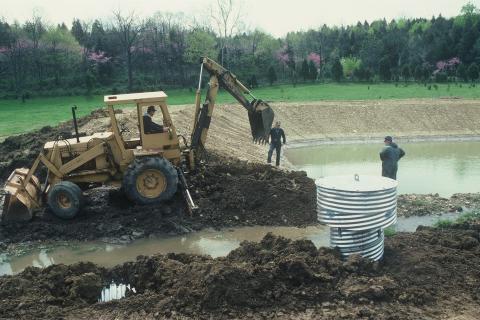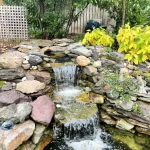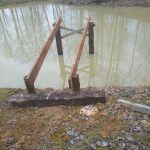Creating a pond can be a wonderful addition to your property, offering a serene spot for wildlife, aquatic plants, and relaxation. Whether you’re looking to build a small backyard pond or a larger water feature, the process of digging a pond requires careful planning and execution. In this guide, we’ll explore the steps involved in digging a pond and provide tips to help you create a beautiful and functional water feature.

Credit: www.youtube.com
1. Planning Your Pond
Before you start digging, it’s essential to plan your pond carefully. Consider the size, shape, and location of your pond. Think about how you want to use the pond – whether it’s for fish, wildlife, or simply aesthetic purposes. Make sure to check with local authorities for any regulations or permits required for pond construction in your area.
2. Choosing The Right Location
When selecting a location for your pond, consider factors such as sunlight exposure, proximity to trees, and drainage. Choose a spot that receives a good amount of sunlight but also has some shade to prevent excessive algae growth. Avoid areas with overhanging trees, as falling leaves can create maintenance issues.
3. Gathering the Necessary Tools
Before you start digging, gather the tools you’ll need for the job. Some essential tools for digging a pond include a shovel, a spade, a wheelbarrow, and a level. You may also need a measuring tape, stakes, and string to mark out the pond’s shape and size accurately.
4. Marking Out the Pond Area
Use stakes and string to mark out the area where you plan to dig the pond. Start by outlining the shape of the pond using the string, and then use a measuring tape to ensure that the dimensions are accurate. This step will help you visualize the final size and shape of your pond.
5. Digging the Pond
Once you’ve marked out the pond area, it’s time to start digging. Begin by digging a shallow shelf around the edge of the pond to create a gradual slope. This shelf will provide a place for aquatic plants and wildlife to thrive. As you dig, periodically check the depth and level of the pond to ensure uniformity.

Credit: permies.com
Tips for Digging a Pond:
- Remove rocks and debris from the pond area to prevent punctures in the pond liner.
- Consider the water source for your pond – whether it’s a natural spring, well water, or municipal supply.
- Include a shelf or ledge in the pond design to provide habitat for aquatic plants and animals.
- Check the soil type in your pond area to ensure proper drainage and stability.
6. Installing A Pond Liner
Once you’ve dug the pond to the desired depth and shape, it’s time to install a pond liner. Pond liners are essential for preventing water seepage and maintaining the water level in the pond. Choose a durable, UV-resistant liner that is the right size for your pond.
7. Filling the Pond
After installing the pond liner, fill the pond with water. Use a garden hose or a water pump to fill the pond gradually, allowing the liner to settle into place. Check the water level regularly and make adjustments as needed. Once the pond is filled, let the water sit for a few days to allow any chemicals to dissipate.
8. Adding Plants and Wildlife
Once your pond is filled with water, it’s time to add aquatic plants and wildlife. Choose a variety of plants such as water lilies, lotus, and submerged plants to create a balanced ecosystem. Consider adding fish, frogs, and other aquatic creatures to enhance the pond’s biodiversity.
9. Maintaining Your Pond
Regular maintenance is key to keeping your pond healthy and beautiful. Remove debris such as leaves and algae regularly, and trim plants as needed to prevent overgrowth. Monitor the water quality and pH levels, and make adjustments as necessary to ensure a thriving pond ecosystem.
Conclusion
Digging a pond can be a rewarding project that adds beauty and tranquility to your outdoor space. By following these steps and tips, you can create a stunning pond that provides habitat for wildlife, aquatic plants, and hours of relaxation. Remember to plan carefully, choose the right location, and maintain your pond regularly to enjoy its benefits for years to come.





